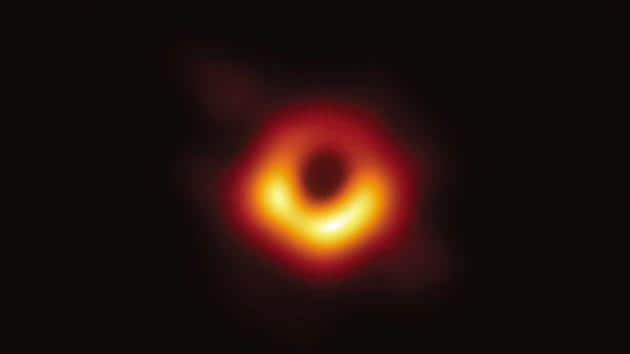Einstein has been proven right again
It is disappointing that we couldn’t see the black hole in our Milky Way. But the day can’t be far
The Event Horizon Telescope collaboration showed the image of a more or less doughnut-shaped object with a somewhat fuzzy dark circle in the middle, against the black sky, to the world recently. Why would this be heart-stopping, whether to an astrophysicist or a science buff? The short answer is that it is the shadow of a real black hole.

Black holes are chunks of space from which nothing we know, not even light, can escape. Over the last century, black holes emerged from being just theoretical constructs to things that astrophysicists could hope to hunt. To begin with there was the idea that the heaviest stars, when spent of their fuel, could collapse into very dense compact objects, either neutron stars or, if even heavier, then black holes. An important milestone was the discovery of rotating magnetised neutron stars or pulsars by Jocelyn Bell in 1967, that showed such heavy compact objects to be real.
Astrophysicists also began to discover sources of both visible and radio light in the sky that were clearly not stars, but located in the far reaches of our universe. That we could still see them meant that they spewed enormous power.
While the masses required to explain the enormous power was at least a million times our sun’s mass, this was still only circumstantial evidence for giant black holes.
Leapfrog to the Event Horizon Telescope. If stars happen to wander into the close vicinity of a black hole, they will start to zip around it at high speed in elliptical paths, similar to the earth and other planets being driven into elliptical paths around our sun. By studying their paths, the mass of the driver black hole could be inferred.
If some gas or stars wander into its vicinity, that matter will be furiously captured by the strong gravity of the black hole, and in the process of spiralling into the black hole, the matter will be heated to enormous temperatures and thereby shine. This is the source of power that was seen from the distant giant black holes since the 1960s. Einstein’s theory predicts that the strong gravity would bend the light from the spiralling shining matter, so that we would be able to see the shine from the spiralling stuff behind the black hole as well, and thus the dark black hole would be silhouetted against this light, a la the fictional black hole Gargantua in the movie Interstellar.
We need eyes, then, that are sharp enough to image this silhouette. The sharpness needed depends both on how big it is and how far it is — getting worse with reducing size and increasing distance.
The images from the Event Horizon Telescope are the sharpest ever, equivalent to being able to discern a mango on the moon or reading the newspaper located in Delhi while sitting in Bengaluru.
First, the black hole shadow hunters harnessed multiple telescopes spread across continents not just to stare at the same spot in the sky, but to enmesh the gathered signals to discover how they “change together” which can give an image as sharp as if one had a telescope nearly as big as the planet. That discovery is tough, because the signals are awfully feeble, and more so because there isn’t an actual telescope as big as the planet. Powerful computers and machine learning techniques are key tools that make the imaging possible.
Second, the wavelength of the light signals is very low — just a millimetre long — which makes the pictures sharper than any of the radio pictures so far.
And what is special about their target Messier 87? Its an enormous galaxy over 50 million light years away, with a giant black hole in its centre that is incredibly luminous across the whole electromagnetic spectrum and also spews out twin jets of plasma that reach well beyond its swarming stars to scales of several hundred thousand light years. Indirect methods had estimated that this black hole weighed over a billion solar masses. This enormous size in relative proximity made it occur in the sweet spot just within the capability of the Event Horizon Telescope.
So a hundred years after the total solar eclipse of 1919 when the bending of starlight from near the eclipsed Sun substantiated Einstein’s theory of relativity, Einstein has once again been proven right.
Is it disappointing that the giant black hole in the centre of our Milky Way, also a target for the Event Horizon Telescope, was not shown to us in silhouette? Indeed yes, but the matter around it is not spiralling in and shining in the same powerful way, and so it is a tougher task to capture it. But the day cannot be far!
Prajval Shastri is an astrophysicist from Bengaluru whose core research interest is the empirical investigation of giant black holes that are found in the centres of distant galaxies
The views expressed are personal






